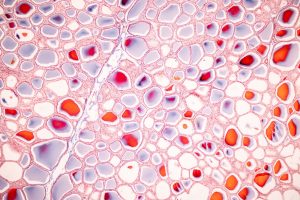Study reveals heart failure insights at single-cell level

In a recent study published in the Nature Cardiovascular Research, researchers used single-cell sequencing methods to examine the cell-intrinsic effects of hematopoietic stem cells with somatic mutations that result in clonal hematopoiesis of indeterminate potential (CHIP), in circulating cells from heart failure patients.
Background
Somatic mutations that occur in the hematopoietic stem cells can often be leukemogenic and lead to clonal expansion of the mutated stem cells, which is known as clonal hematopoiesis. The prognosis associated with clonal hematopoiesis is poor and is linked to leukemia only in rare cases.
The poor prognosis is often due to other factors related to progressing age, such as cardiovascular disease. Several studies have reported the association between clonal hematopoietic drivers of mutations that are linked to heart failure and inflammation.
Mutations in the epigenetic regulator genes deoxyribonucleic acid (DNA) methyltransferase 3 alpha (DNMT3A) and tet methylcytosine dioxygenase 2 (TET2), driven by clonal hematopoiesis have been implicated in the activation of inflammatory cytokines.
Bone marrow transplants involving cells heterozygous for DNMT3A and TET2 have also resulted in increased infiltration of the heart with T cells and macrophages. The inflammatory effect of clonal hematopoiesis driver mutations has also been observed at the single-cell level in the overexpression of inflammatory genes.
Single-cell ribonucleic acid sequencing (scRNA-seq) can be used to identify the cells with clonal hematopoiesis driver mutations in the DNMT3A gene to understand their role in heart failure.
About the study
In the present study, the researchers used Oxford Nanopore long-read sequencing to conduct scRNA-seq to detect DNMT3A mutant cells among circulating immune cells from patients with heart failure. A method called MutDetect-seq was developed to identify single cells with DNMT3A mutations.
This method combines the long-read sequences obtained using the Oxford Nanopore technology with short-read sequences from single-cell gene expression profiles. The enriched and barcoded regions are then again subjected to Oxford Nanopore long-read sequencing.
The MutDetect-seq method was applied to samples of circulating immune cells from five heart failure patients known to have DNMT3A mutations. An adapted bioinformatics pipeline was then used to identify the cells with specific coding sequence mutations in the DNMT3A gene.
The variant allele frequency of mutations identified previously from whole blood samples using targeted DNA sequencing was used to assess the ratio of mutant to wild-type cells and evaluate the efficiency of the MutDetect-seq method.
Based on the variation in the frequencies of different immune cells exhibiting the DNMT3A mutation, in-depth analyses were performed for these subsets of immune cells. Monocytes, which had the most differentially regulated genes, were subclustered as classical, non-classical, and intermediate monocytes, and the enrichment of the DNMT3A mutant cells was examined across these subclusters.
The researchers also investigated how the DNMT3A mutations influenced subsets of T cells, despite the fact that T cells exhibited a substantially lower number of upregulated genes.
Additionally, naïve CD4+ T cells were also subjected to DNMT3A silencing to understand the direct effects of DNMT3A mutations on T-cell function. Similar DNMT3A silencing was also performed in natural killer (NK) cell lines to determine the role of the DNMT3A gene in NK cells.
Results
The findings reported that altered gene expression profiles were identified in monocytes, NK cells, and CD4+ T cells containing DNMT3A mutations.
The upregulation of genes associated with phagocytosis and inflammation was higher in the monocytes, and increased effector function and activation signatures were prominent in the T cells and NK cells. The mutant monocytes and T cells also showed increased paracrine signaling pathways as compared to wild-type monocytes and T cells, respectively.
The multipotent nature of DNMT3A CHIP mutations, which had been reported in various previous studies, was confirmed in the present study, where cells with DNMT3A mutations were retrieved from all major immune cell populations.
Furthermore, since the study compared the circulating immune cells of heart failure patients with and without known DNMT3A mutations, the findings indicate that the observed altered gene expression patterns are in addition to the inflammatory activation already present in the circulating immune cells of patients with heart failure.
Conclusions
To summarize, the findings demonstrated that DNMT3A mutation-associated cell-intrinsic effects in circulating immune cells were linked to poor prognosis for patients with heart failure.
Furthermore, this approach to identifying CHIP driver mutations at the single-cell level could also be applied to understanding the cell-intrinsic effects in the context of other diseases. Lastly, these results also suggest potential therapeutic options involving treatment strategies specific to different mutations.







